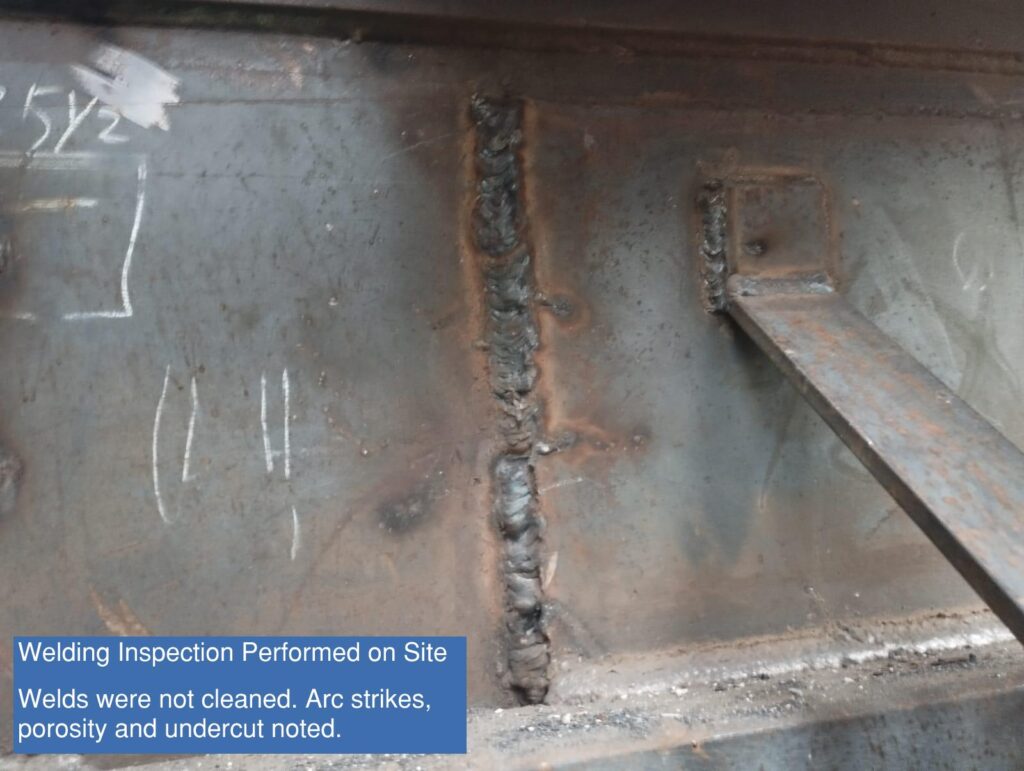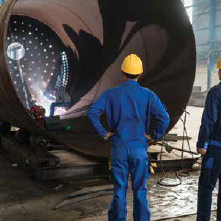Top Advantages of Choosing Welding Inspection Racine for Quality Control
Top Advantages of Choosing Welding Inspection Racine for Quality Control
Blog Article
Innovative Approaches to Fillet Weld Assessment and Screening: Enhancing Weld High Quality and Compliance Requirements
In the realm of welding, the top quality and integrity of fillet welds play an essential duty in ensuring the structural strength and dependability of different commercial components. With the consistent drive for improved performance and conformity with rigorous standards, the exploration of ingenious strategies to fillet weld assessment and testing has ended up being necessary. As markets evolve, the standard techniques might no more be sufficient in satisfying the needs of contemporary welding applications. By welcoming cutting-edge innovations and approaches, a new perspective of opportunities emerges in the world of weld quality analysis and adherence to conformity requirements.
Advanced Non-Destructive Testing Approaches
Using cutting edge technologies, advanced non-destructive testing methods play a critical duty in ensuring the honesty and high quality of fillet welds. These approaches, such as phased selection ultrasonic screening (PAUT) and magnetic bit screening (MPT), deal comprehensive insights into the weld's internal framework without triggering any damages to the material. PAUT, as an example, makes use of several ultrasonic aspects to inspect the weld from different angles, offering a thorough visualization of possible problems like lack of fusion or splits.
Similarly, MPT works in identifying surface-breaking defects by using an electromagnetic field and iron fragments to the weld area. This technique is specifically helpful for determining suspensions that may endanger the weld's stamina. By utilizing these advanced non-destructive screening techniques, weld examiners can accurately assess the top quality of fillet welds, ensuring compliance with market requirements and regulations. The capacity to detect problems early on not just enhances weld quality yet likewise prevents pricey rework or failings in structural integrity, highlighting the relevance of these ingenious screening strategies in welding inspections.
Robotics and Automation in Examination
The assimilation of robotics and automation has reinvented the assessment procedure for fillet welds, boosting efficiency and accuracy in high quality assessment. Robotics provide exact control and repeatability in examining welds, making certain regular and dependable outcomes. Automated systems can be configured to follow specific evaluation courses, ensuring complete coverage of welds and lowering the risk of human mistake.
Robotic examination systems furnished with sophisticated sensing units can spot and determine weld functions with high precision, giving thorough data for analysis. These systems can identify defects such as fractures, lack of combination, and porosity, allowing timely rehabilitative activities to be taken. Furthermore, robotics and automation permit real-time data collection and evaluation, giving immediate comments to operators and helping with quick decision-making procedures.
In addition, the use of robotics and automation in fillet weld evaluation enhances overall productivity by decreasing inspection times and enhancing inspection throughput. By simplifying the inspection process, suppliers can make sure weld top quality and compliance criteria are fulfilled efficiently, eventually leading to set you back financial savings and improved product high quality.
Making Use Of Expert System for Analysis
Expert system plays an essential role in boosting the performance and precision of analysis in fillet weld evaluation procedures. By using the power of AI, examiners can enhance the evaluation of weld quality and compliance standards, leading to much more specific and trustworthy outcomes. AI algorithms can quickly process huge quantities of data from weld evaluations, detecting defects or inconsistencies that may be challenging to relate to the nude eye. This sophisticated technology makes it possible for real-time monitoring Going Here of weld quality, enabling prompt restorative activities to be taken if any kind of issues are Bonuses identified.
Furthermore, AI systems can find out from past examination information, continuously boosting their capacity to determine potential problems and inconsistencies in fillet welds. This flexible learning capacity enhances the total quality assurance procedure, decreasing the probability of human mistake and guaranteeing that welds fulfill the called for criteria. By incorporating expert system into fillet weld evaluation, industries can accomplish higher degrees of performance, consistency, and conformity in their examination techniques.
Portable Equipment for On-Site Evaluation
 Enhancing area examination performance, the adoption of mobile tools transforms on-site analysis processes for fillet welds. These tools offer flexibility and benefit, enabling inspectors to conduct detailed assessments in different places, consisting of challenging or remote atmospheres. Portable tools such as ultrasonic screening tools, magnetic fragment examination devices, and digital radiography systems offer real-time data and high-resolution imaging capacities, making it possible for fast decision-making and instant feedback on weld top quality.
Enhancing area examination performance, the adoption of mobile tools transforms on-site analysis processes for fillet welds. These tools offer flexibility and benefit, enabling inspectors to conduct detailed assessments in different places, consisting of challenging or remote atmospheres. Portable tools such as ultrasonic screening tools, magnetic fragment examination devices, and digital radiography systems offer real-time data and high-resolution imaging capacities, making it possible for fast decision-making and instant feedback on weld top quality.One significant benefit of mobile devices is their ability to simplify evaluation procedures, click over here now decreasing downtime and improving total performance. Inspectors can quickly deliver these devices to different task sites, eliminating the need for transferring heavy equipment or components to off-site centers. In addition, the portability of these tools promotes cost-effectiveness by lessening transportation costs and increasing assessment timelines.
Additionally, using mobile devices for on-site examination advertises proactive quality assurance steps, as examiners can immediately identify and deal with any kind of possible welding flaws or disparities. By integrating these cutting-edge innovations into on-site inspection techniques, welding experts can guarantee compliance with market criteria and enhance weld top quality, eventually resulting in improved architectural honesty and safety in different welding applications.
Combination of Data Management Equipment
Having actually optimized on-site examination processes via the usage of mobile devices, the following phase entails the seamless integration of data administration systems to further improve performance and information evaluation capacities in fillet weld assessment and screening. Welding Inspection Racine. By incorporating information administration systems right into the inspection procedure, companies can streamline information collection, storage, and analysis. This combination enables for real-time surveillance of weld quality, prompt recognition of issues, and punctual decision-making to rectify any kind of concerns that might occur during the examination procedure
The integration of data administration systems allows seamless interaction in between different stakeholders included in the assessment process, promoting partnership and improving general high quality control steps. Inevitably, the combination of data management systems serves to boost the criteria of fillet weld evaluation and testing, ensuring compliance with sector laws and improving weld high quality.
Conclusion
To conclude, cutting-edge strategies to fillet weld assessment and testing have actually substantially improved weld quality and conformity standards. Advanced non-destructive testing approaches, robotics, automation, synthetic intelligence, mobile tools, and information administration systems have changed the way weld inspections are performed. By using these modern technologies, industries can make certain that welds fulfill the needed top quality standards and regulations, ultimately improving overall effectiveness and safety in welding procedures.

By using these sophisticated non-destructive testing techniques, weld inspectors can accurately assess the top quality of fillet welds, guaranteeing conformity with sector criteria and laws. Portable tools such as ultrasonic testing tools, magnetic bit assessment devices, and digital radiography systems provide real-time data and high-resolution imaging capabilities, making it possible for quick decision-making and prompt comments on weld high quality.
Having enhanced on-site assessment processes via the utilization of portable tools, the following stage involves the smooth combination of information management systems to even more boost performance and information analysis capabilities in fillet weld examination and screening (Welding Inspection Racine). Eventually, the integration of information monitoring systems serves to boost the standards of fillet weld evaluation and testing, ensuring compliance with industry policies and enhancing weld quality
 In final thought, ingenious approaches to fillet weld assessment and testing have actually substantially improved weld high quality and compliance standards.
In final thought, ingenious approaches to fillet weld assessment and testing have actually substantially improved weld high quality and compliance standards.Report this page